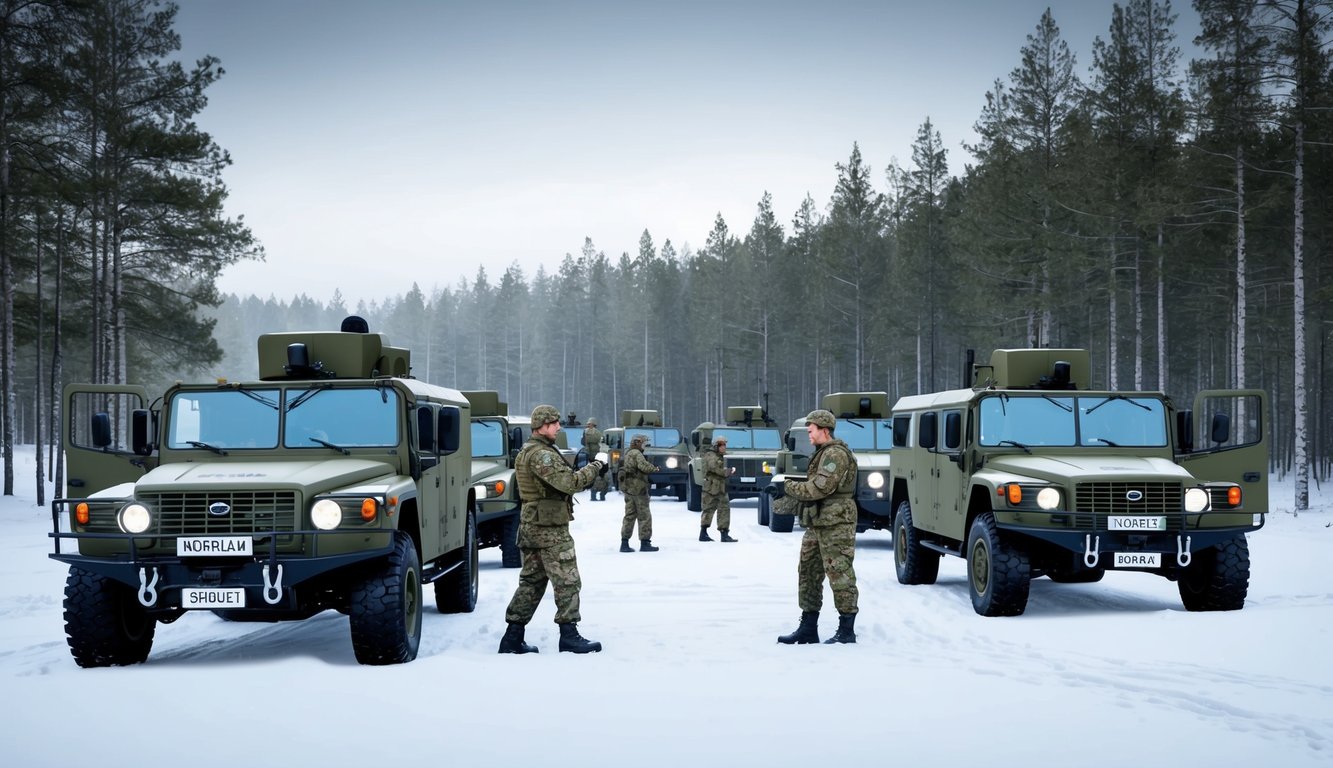Norway’s military boasts a storied history that stretches back to the 9th century.
It has transformed from a navy-centric force into a modern, well-equipped defense entity.
Currently, the Norwegian Armed Forces, referred to as Forsvaret, are essential in ensuring national security and participating in global peacekeeping missions.
The Norwegian Armed Forces comprise four primary branches: the Army, Navy, Air Force, and Home Guard, each designated with specific roles and capabilities. As a NATO member, Norway’s military works closely with its allies while emphasizing territorial defense.
The unique geography of the country, characterized by a long coastline and a strategic Arctic position, significantly influences its defense policies and approaches.
Although Norway maintains a relatively compact standing military, it employs a universal conscription system to ensure a well-trained reserve force.
The military is also equipped with cutting-edge technology, including advanced fighter jets and naval ships.
Delving into Norway’s military world reveals a captivating fusion of tradition and innovation that exemplifies the nation’s dedication to peace and security.
Key Takeaways
- Norway’s military integrates historical traditions with contemporary capabilities to secure the nation
- The armed forces engage in international assignments while emphasizing territorial protection
- Norway’s distinct geography and NATO membership significantly shape its military strategy and equipment choices
Historical Context
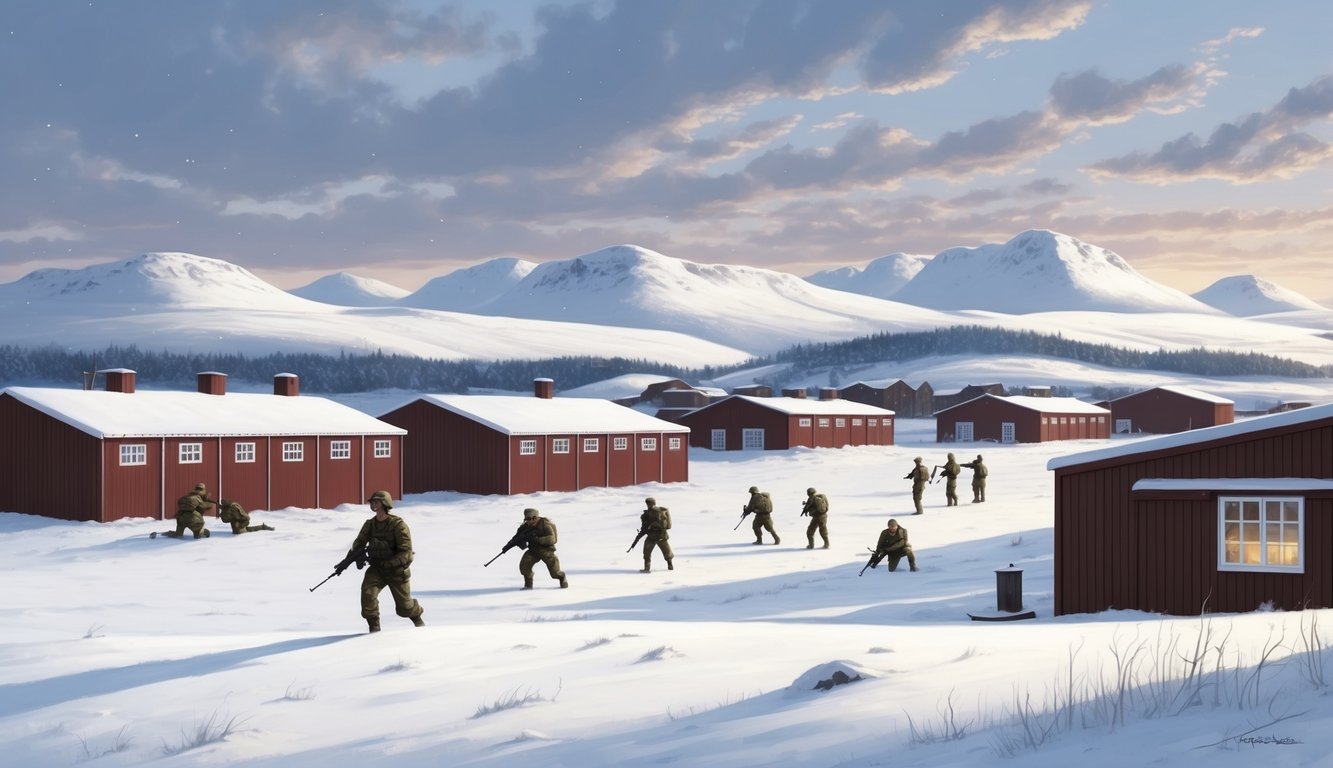
The military history of Norway is rich and multifaceted, spanning centuries of evolution.
The armed forces have been pivotal in forming the country’s national identity and its relations on the world stage.
Early History
During the 8th to 11th centuries, Viking raiders instilled fear throughout Europe.
Their longships and formidable warriors established a legacy of military strength.
Following the Viking Age, Norway’s military power continued to advance.
By the 13th century, a standing army and navy had begun to take shape.
The Norwegian monarchy leveraged these forces to exert influence and secure trade routes.
By the late Middle Ages, Norway had established itself as a prominent naval authority in Northern Europe.
Union and Alliances
Norway entered a union with Denmark in 1380, which persisted until 1814.
During this period, the Norwegian military was closely aligned with Danish objectives.
Interestingly, Norway forged an alliance with France during the Napoleonic Wars.
In 1814, Norway briefly attained independence before entering a union with Sweden.
During this time, the Norwegian Constitution was crafted, leading to the formation of a national defense force.
This union with Sweden endured until 1905, when Norway achieved full autonomy.
World Wars and Neutrality
Norway maintained neutrality in World War I, although its merchant fleet sustained significant losses.
In World War II, despite its neutral stance, Norway was invaded by Nazi Germany in 1940.
A courageous resistance movement later contributed to the eventual liberation in 1945.
The Norwegian government-in-exile collaborated closely with Allied forces during the conflict, establishing a foundation for Norway’s post-war foreign policy.
Cold War Era
Post-World War II, Norway became a founding member of NATO in 1949, marking a pivotal transformation in its defense strategy.
Increased military collaboration with Western allies characterized this period.
The Cold War presented new hurdles for Norway’s armed forces, requiring them to balance deterrence against the Soviet Union with a non-allowance of foreign bases on Norwegian territory during peacetime.
This strategic approach became known as the “Norwegian model” of NATO membership.
Structure of the Norwegian Armed Forces
The Norwegian Armed Forces, or Forsvaret, maintain a structured organization aimed at ensuring national security.
This structure features a blend of professional service members and conscripts across its various branches and specialized units.
Branches and Components
The Norwegian military is organized into five primary branches: the Army, Navy, Air Force, Home Guard, and the newly established Cyber Defence Force.
Each branch plays a vital role in safeguarding Norway’s interests.
The Navy encompasses the Coast Guard, responsible for patrolling Norway’s extensive coastline.
The Air Force manages fighter jets and helicopters, along with air defense systems.
The Home Guard serves as a quick-response unit with local expertise, prepared to safeguard critical infrastructure.
Norway implements conscription for both men and women, fostering a connection between the military and the civilian populace.
Specialized Battalions
Within the Army, various specialized battalions exist.
The Telemark Battalion functions as a rapid deployment force, always ready for action.
There is also an Armoured Battalion equipped with tanks and heavy vehicles.
Fire support is provided by the Artillery Battalion, while the Signals Battalion manages communications.
These units often collaborate as part of Brigade Nord, the Army’s primary combat formation.
Special forces units such as Forsvarets Spesialkommando (FSK) and Marinejegerkommandoen operate under a unified Special Operations Command, trained for high-stakes missions domestically and internationally.
Regional Divisions
The geographic realities of Norway shape its military structure.
Strategic bases are located in Northern Norway, which has significant importance.
Army and Air Force units are stationed in areas such as Bardufoss.
The Home Guard is divided into regional districts, ensuring local representation throughout the country.
This structure allows for prompt responses to potential threats or emergencies.
Naval bases dot the coastline, with a notable presence in the north to monitor Arctic waters.
This regional military arrangement supports a balance between national defense and NATO responsibilities.
Military Policy and Strategy
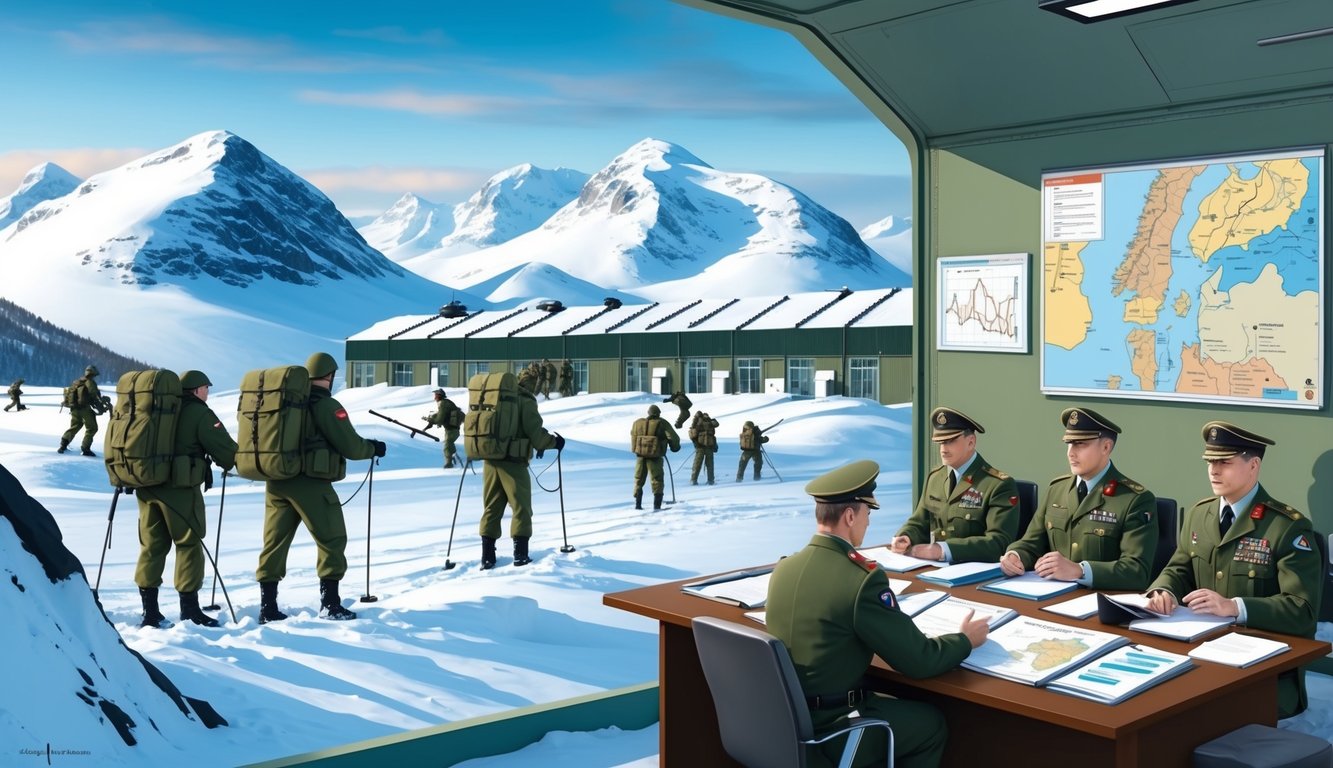
Norway upholds a comprehensive military policy focused on national defense and international collaboration.
The strategic approach balances domestic capabilities with robust alliances to ensure security amid a changing global landscape.
Conscription and Recruitment
The universal conscription model in Norway requires military service from both men and women.
This ensures a steady stream of personnel entering the armed forces.
Typically, military service lasts 12 months, with many individuals opting to continue their military careers or join the reserves after finishing this initial period.
This conscription system helps maintain a skilled and diverse military, promoting a sense of national unity and shared responsibility for defense.
Defence Budget and Expenditure
Norway’s strong commitment to defense is evident in its significant military budget.
The government has proposed a historic increase in defense spending.
In the coming 12 years, Norway plans to invest 600 billion kroner (around 60 billion USD) into its armed forces.
This substantial increase aims to enhance all branches of the Norwegian Armed Forces.
In light of a shifting security climate in Europe, Prime Minister Jonas Gahr Støre’s administration has prioritized defense funding.
The elevated budget will support the development of new capabilities, upgrades of existing equipment, and personnel expansions.
Strategic Alliances and Partnerships
Norway’s defense strategy places a strong emphasis on international collaboration, with NATO membership being integral to this framework.
Norway fosters close ties with the United States and other NATO partners, ensuring collective security and cooperative defense planning.
Active participation in NATO exercises and operations is also a priority for Norway.
The country has taken part in missions such as the War in Afghanistan, underscoring its commitment to alliance responsibilities.
Cooperation with other Nordic nations is vital, as Norway collaborates with its neighbors to address mutual security challenges in Northern Europe.
Exercises and Operations
Regular military exercises form a crucial aspect of Norway’s defense strategy.
These drills enhance military readiness and promote interoperability with allies.
You might have heard of “Cold Response,” a large-scale exercise hosted in Norway to assess the capability of Norwegian and allied forces to operate in demanding Arctic conditions.
The military conducts frequent naval and air patrols, particularly in the High North, asserting sovereignty and monitoring activities in strategically significant regions.
International deployments also play a role in Norway’s military operations, with Norwegian personnel participating in UN peacekeeping and NATO-led efforts across the globe.
Military Technology and Equipment
Norway’s armed forces employ advanced technology and equipment to maintain a robust defensive posture.
The military emphasizes innovative solutions across multiple domains.
Vehicles and Artillery
The military arsenal of Norway boasts a variety of modern vehicles.
The Leopard 2A4NO main battle tank serves as a core component of the armored battalions, offering excellent mobility and firepower suitable for the Nordic landscape.
For transporting infantry, the CV90 infantry fighting vehicle is prevalent.
This vehicle provides adequate protection and versatility for troops on the move.
Artillery units utilize the M109A3GN self-propelled howitzer, capable of delivering precise fire support over substantial distances.
Logistical needs are met by the robust Scania P-series trucks, which ensure the delivery of supplies to troops in remote areas.
Small Arms and Personal Equipment
Norwegian soldiers are equipped with the HK416 assault rifle as their standard-issue weapon, known for its reliability.
For sidearm use, the Glock 17 pistol is frequently deployed, favored for its efficiency and simplicity.
Support roles utilize the FN Minimi light machine gun, offering sustained fire capabilities to infantry units.
The M72 LAW rocket launcher is employed for anti-armor operations, valued for its lightweight design and ease of use in combat.
For precision engagement, the Barrett MRAD sniper rifle is utilized, enabling accurate targeting over long distances.
Surveillance and Defence Systems
Norway places significant investment in surveillance technology to monitor its vast coastal and border areas.
Advanced radar systems provide early warning capabilities against emerging threats.
The NASAMS (Norwegian Advanced Surface-to-Air Missile System) represents a vital element of Norway’s air defense framework, adept at simultaneous engagement of multiple aerial targets.
To maintain situational awareness, Norwegian forces utilize state-of-the-art communication systems, facilitating efficient coordination during operations.
Unmanned aerial vehicles (UAVs) are increasingly instrumental in reconnaissance missions, delivering real-time intelligence without endangering personnel.
Missiles and Munitions
The FGM-148 Javelin anti-tank missile system equips infantry units with a powerful weapon against armored threats, featuring a fire-and-forget capability that allows for a swift repositioning after use.
Diverse mortar systems are utilized for rapid indirect fire support, offering timely and precise assistance to engaged troops.
The Carl Gustav recoilless rifle serves as a versatile support weapon capable of addressing a wide array of targets with varied ammunition options.
Norway’s naval forces utilize advanced anti-ship missiles to protect its extensive coastline, providing a formidable deterrent against potential maritime threats.
Challenges and Considerations
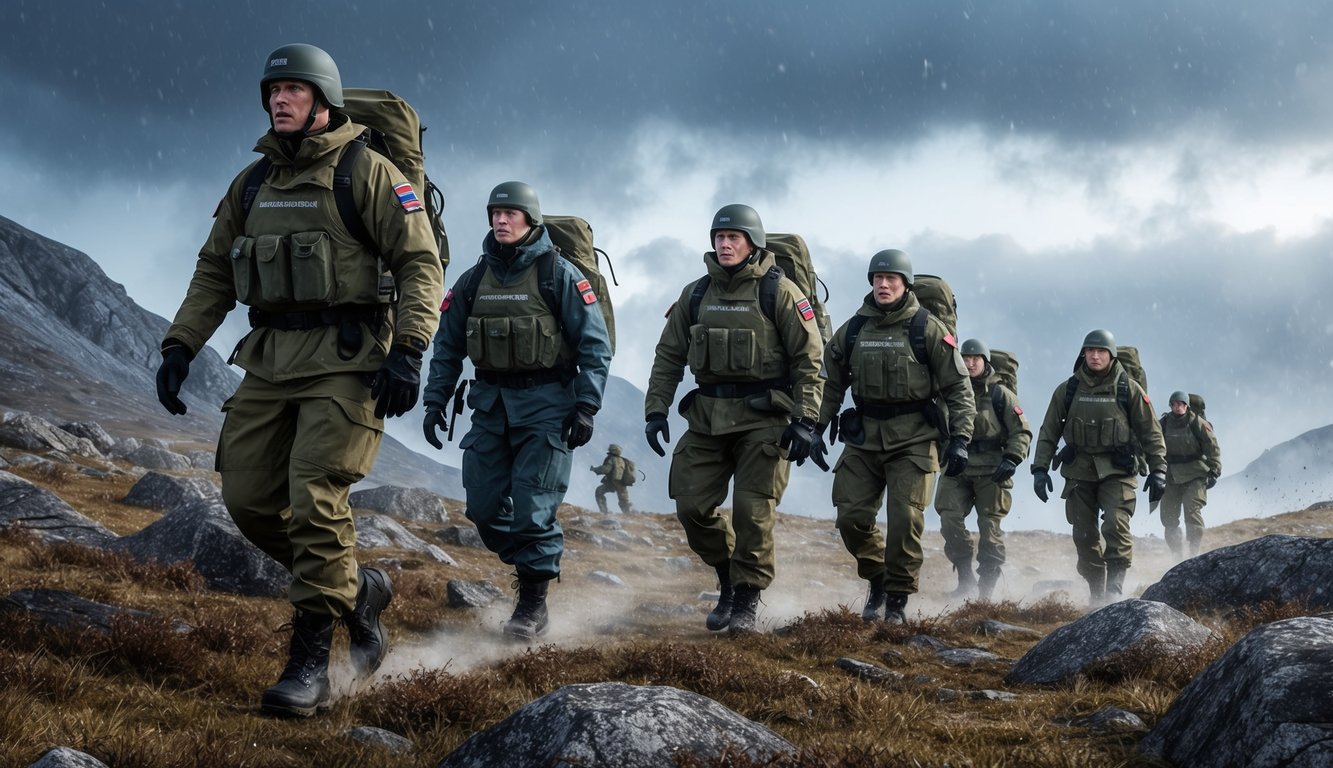
Norway’s military faces intricate challenges in protecting the nation while fulfilling international obligations.
Balancing domestic defense priorities with global responsibilities necessitates strategic planning and resource management.
Security and Territorial Integrity
Norway’s extensive coastline and strategic positioning present distinctive challenges.
With NATO’s northern border neighboring Russia, this proximity warrants ongoing vigilance and robust defense measures.
The Norwegian Ministry of Defence is committed to safeguarding critical infrastructure, such as offshore oil and gas facilities, with enhanced patrols and surveillance in recent times, especially following security incidents in the Baltic Sea.
Arctic security also emerges as a key concern, with shifting ice patterns opening new shipping lanes that require increased monitoring and presence in the High North.
Defense in the Modern Era
Cybersecurity has become a rising issue for Norway’s national defense.
The nation contends with increasingly sophisticated threats targeting essential governmental systems and infrastructures.
The military is adapting by investing in cyber defense capacities and recruiting specialized personnel to combat digital risks.
Technological advancements are transforming warfare dynamics, driving Norway toward modernization of equipment and integration of new technologies like AI and unmanned systems within its defense framework.
However, budget limitations can hinder the speed of modernization, compelling a balance between acquiring advanced capabilities and sustaining traditional force structures.
International Roles and Responsibilities
As a NATO member, Norway plays a critical role in the alliance’s collective defense strategy, expected to contribute to international operations while maintaining interoperability with allied forces.
Norway’s involvement in peacekeeping missions and crisis management operations stretches its resources, necessitating a careful equilibrium between these commitments and domestic defense requirements.
Regional collaboration in the Nordic region gains increased importance, with Norway closely working with neighboring countries to enhance security in Northern Europe.
Humanitarian assistance and disaster relief operations are integral to Norway’s international obligations, requiring specialized training and resources that complicate military planning.
Engagement with the Public
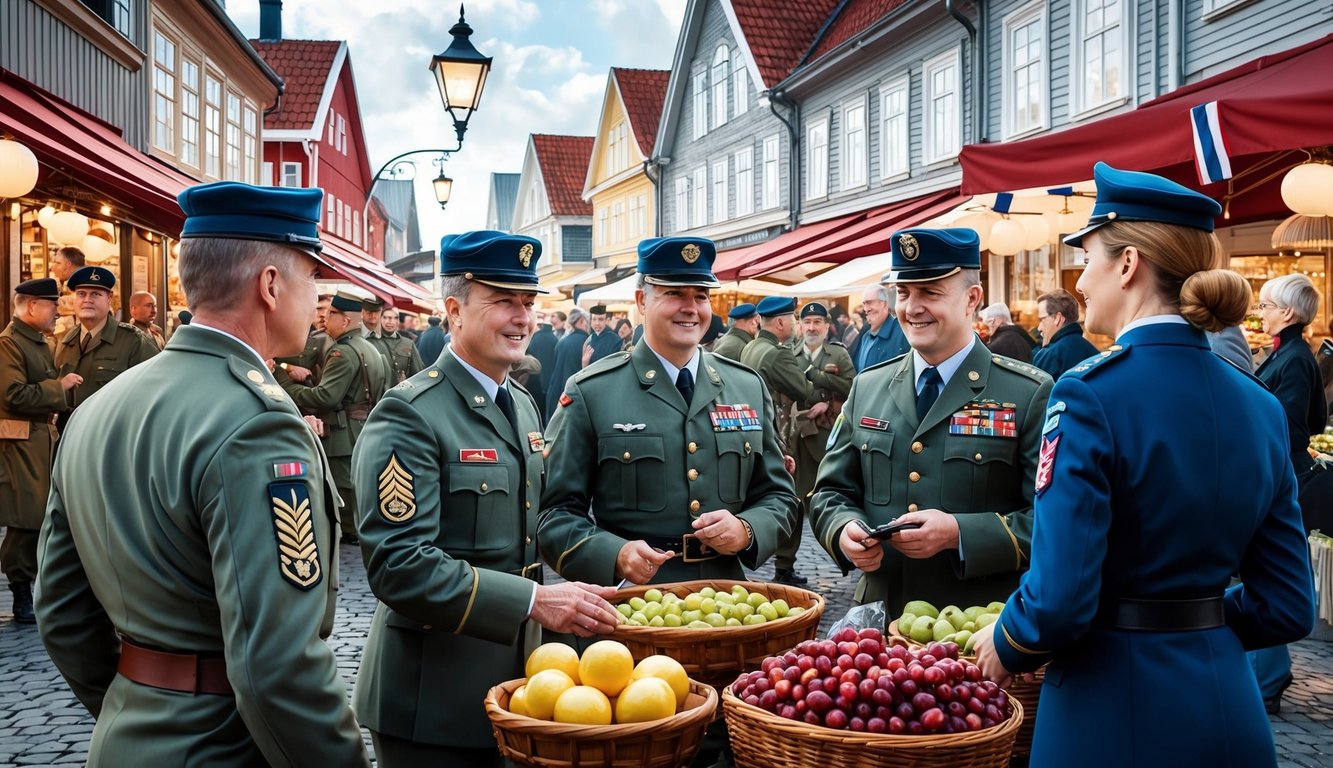
The Norwegian Armed Forces, known as Forsvaret, actively seek to foster a relationship with the public through various strategies that promote transparency, educate citizens, and cultivate support for their initiatives.
Public Perception and Support
The military enjoys a positive reputation among Norwegians, with many recognizing military service as a valuable experience for young adults.
This widespread public support is rooted in the nation’s historical context and current geopolitical landscape.
Public opinion surveys consistently reveal favorable views towards Forsvaret, which are essential for upholding a robust defense capability and justifying military funding.
The military’s involvement in peacekeeping and humanitarian missions has further enhanced its public image.
News reports often highlight Norwegian troops engaged in UN or NATO operations abroad.
Outreach and Education
Forsvaret operates various outreach initiatives aimed at connecting with civilians.
Open days at military bases offer the public a firsthand experience with equipment and opportunities to engage with service members.
The armed forces also participate in educational outreach to schools, providing presentations and visits that help students grasp the military’s societal role.
For in-depth information, Forsvaret.no serves as a comprehensive resource detailing career paths, ongoing operations, and the organization’s framework.
Social media is another avenue employed to engage younger demographics, offering regular updates on military achievements and activities.
Transparency and Communication
Transparency is a pivotal focus for the Norwegian military, with annual reports and operational statistics made accessible through Forsvaret’s website.
The armed forces frequently update media outlets about their activities, cultivating public trust and keeping citizens informed on defense issues.
Forsvaret.no also ensures clarity regarding its use of cookies, extending this transparency to digital practices while safeguarding user privacy through appropriate data collection protocols.
Military personnel are often involved in public discussions and debates, observed in community gatherings or media appearances, where they explain defense strategies and respond to public queries.
Frequently Asked Questions
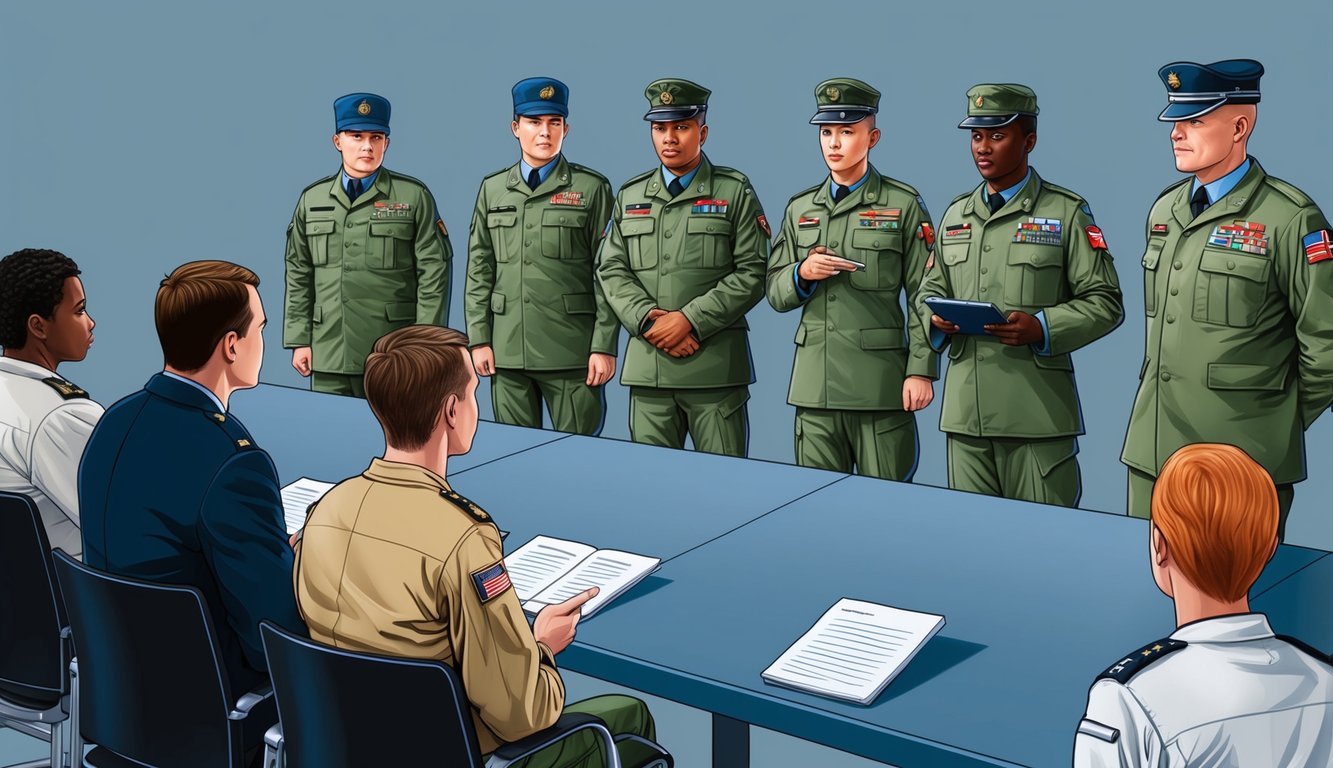
Norway’s military system includes several distinctive features that frequently ignite curiosity.
Here are responses to some common questions about the Norwegian Armed Forces.
How does one enlist in the Norwegian Armed Forces if they’re not a Norwegian citizen?
Generally, non-Norwegian citizens are ineligible to enlist in the Norwegian Armed Forces.
Only Norwegian citizens can serve, although exceptions might be considered for individuals with specialized skills or those who have resided in Norway for an extended period.
Are women required to participate in military service in Norway?
Yes, in Norway, women are obligated to participate in military service.
Since 2015, universal conscription mandates military service for both genders, aiming to promote gender equality within the armed forces.
What is the duration of compulsory military service in Norway?
Typically, compulsory military service in Norway lasts for 12 months.
Following this period, individuals may be called up for refresher training or exercises until they reach the age of 44.
The exact duration may vary depending on one’s role and military requirements.
Where does Norway stand in terms of global military ranking?
Norway’s military ranks favorably on a global scale relative to its population size, recognized for its well-trained personnel and contemporary equipment.
Specific rankings vary based on criteria, but NATO membership enhances its military significance.
What type of equipment is utilized by the Norwegian Army?
The Norwegian Army fields a blend of domestically manufactured and imported equipment, including CV90 infantry fighting vehicles, Leopard 2 tanks, and various artillery systems.
It also employs modern small arms, effective communication systems, and specialized cold-weather gear.
Is military service mandatory for every citizen in Norway?
Military service is compulsory in Norway, though not every citizen serves.
The armed forces select eligible individuals based on their requirements and qualifications.
Alternatives to military service, known as civil service, are available for those who are unable or unwilling to serve.

